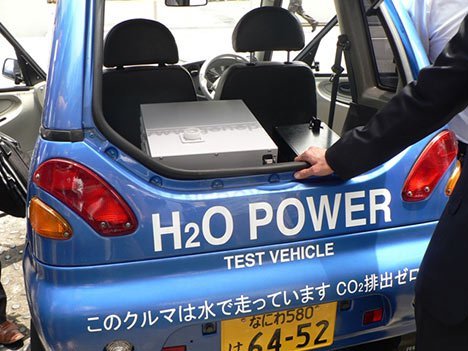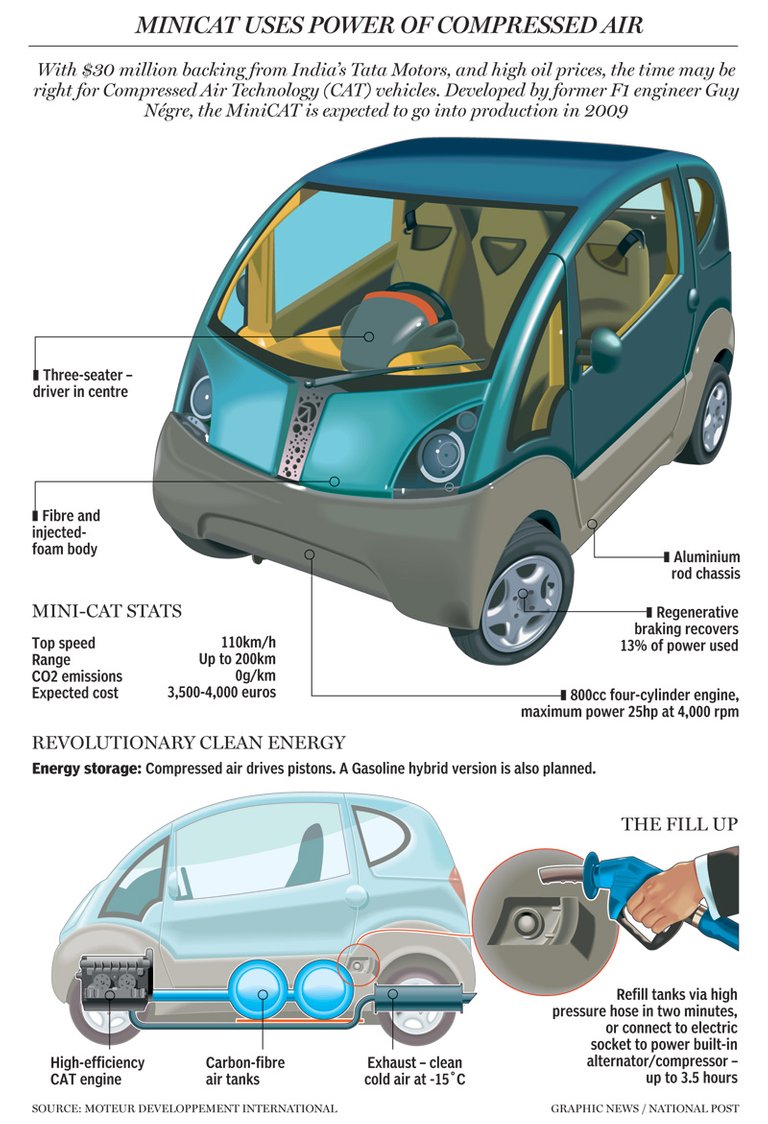
So you've made loads on Steemit and are looking to invest, so you can turn your money into more money. Good stuff! No doubt you already have your own ideas about what to invest in. I'm just here to tell you what to steer clear of. There's no shortage of seemingly promising investment opportunities which, by design, you will never see any return on.

"Investment scam" is a very, very large umbrella covering many more subgroups of scam than I have space or energy to cover in a single article. So I'll be focusing on one type in particular I've seen increase along with the rise of media sharing sites like Youtube: The persecuted inventor whose amazing work has been suppressed by the government or oil companies, and just needs your investment money to continue development.

The classic version of this scam is the "water powered car". Stanley Meyer claimed back in 1980 that he'd built a dune buggy which ran solely on water. When speaking to the media he gave several different, contradictory accounts of how it worked involving "electrical resonance" and "water fuel cell capacitors".
He never submitted a proof of concept model for independent evaluation. When he died of an aneurysm in 1998, many in the conspiracy theory community claimed he'd been assassinated to suppress his revolutionary technology.

It keeps popping up though. Dennis Klein made similar claims starting in 2002. His proposed mechanism involved a new state of matter, "magnegases", and a subset of this group called "aquygen".
He claimed to be in negotiations with major auto manufacturers and that the US government wanted it for military applications. However nothing ever came of these claims and today, they have backpedaled, saying their technology can merely increase fuel efficiency.

The list goes on. It just keeps popping up around the world, but nothing ever comes of it. Why? Is the government really suppressing this promising technology? Is it the oil companies? Or is there a simpler explanation to be found? To answer this, we'll need to look at how hydrogen fuel cell vehicles work.

In an HCEV, pressurized hydrogen gas is carried onboard and fed into a fuel cell where it is recombined with oxygen. This reaction releases the energy of the hydrogen as electrical current, which is used to continually charge a battery that acts as a buffer. That battery then powers the electric motor that moves the car. I say recombine because the hydrogen had to be separated out of oxygen in the first place, or refined out of natural gas, both of which take a lot of energy.

Now, above you will see how a hydrogen car which either burns the hydrogen in a combustion engine or feeds it into a fuel cell could generate its own hydrogen onboard. This is desirable for student or hobby projects because the equipment for compressing and storing hydrogen is expensive and dangerous for amatuers. The energy needed to split the hydrogen and oxygen out of the water comes from an onboard battery.

"But wait a minute" you're thinking. "That means all the energy used to power the car ultimately comes from that battery, not from the water." That's right! Splitting water into oxygen and hydrogen uses more energy than can be generated by recombining the resulting oxygen and hydrogen. Otherwise you'd have invented a perpetual motion machine, since the exhaust of a fuel cell vehicle is water, which could simply be piped back into the tank.

If we subtract everything between the battery and the motor, we have a simple electric car. The only thing accomplished by the addition of water, electrolysis and a fuel cell was to add unnecessary, lossy conversion steps in between the battery and the motor. The world's least efficient electric car. But also the world's most confusing, and that's the key to fooling investors with more money than brains!

A car of this type will indeed "work". For a short while. Much shorter than if you simply ran it directly off the battery. But crucially it will work long enough to give a deep pocketed potential investor a short demo ride in it, to convince him that it works. It will give every appearance of working how the inventor describes to someone without any background in engineering.

Then come the pleas for more investment. "Just a little more money and I can commercialize it." The inventor will regale the investor with stories of government spooks intimidating them, make it into a story of good versus evil, the tireless brilliant underdog versus vested government or corporate interests. A certain kind of person really eats that up.

For the more savvy investors, they'll have prepared a more convoluted explanation of how it works to address the most common objections. Buzzwords like resonance, "charged water", magnegases, aquygen, or "HHO". Googling HHO will bring up page after page selling HHO kits which use energy from the alternator to split water into oxygen and hydrogen, then feeds the hydrogen into the engine.

The same basic problem remains. You cannot get more energy (in the form of hydrogen) out of this device than you put into it (in the form of electricity from the alternator) or you have violated the law of conservation.
You could then just feed the resulting hydrogen into a fuel cell (which is more efficient than an engine anyway) use the fuel cell to power the alternator (or better yet, to power the electrolysis directly) and you've got a perpetual motion machine.

Speaking of perpetual motion, how could I leave out the miraculous "permanent free energy magnetic motor"? Search that on Youtube and you'll be bombarded with video after video purporting to show such a device in action.
All of them claim that a wheel with magnets mounted in such a way as to oppose magnets mounted to the frame will rotate on its own indefinitely, like something out of Looney Tunes.

Some claim the energy necessary comes from the magnets. Or that it's based on Nikola Tesla's work and channels some cosmic force mainstream science is as-yet ignorant of. This video goes over those claims and contains a lot of excellent footage of purported free energy magnetic motors in action:
What the inventor will never allow investors to do is to disassemble the demonstration model completely. This is because it contains a battery inside which is what actually causes it to spin, like any conventional electric motor.
If generating electricity were this easy, the technology would be everywhere. If the government didn't prohibit solar panels, which actually do generate free energy from the environment, why would they suppress this magnetic motor thing?

Back on the topic of automobiles, you may have seen articles circulating for the past decade or so about MDI's compressed air powered cars. This is another example of a device which technically works, but only long enough to convince potential investors to throw money at it.

Compressed air has been in use since the 1800s as a way to power vehicles in closed-in environments like coal mines, where fumes from a combustion engine would asphyxiate workers, and an accident involving flammable fuel could set the coal ablaze.

Compressed air vehicles are easy to build, and as a result are a popular project for engineering students. Commercially, there are compressed air forklifts, notably aboard aircraft carriers in areas with fuel vapor in the air, where electrical or combustion driven forklifts would represent a probable ignition hazard.

Just one problem: The energy density of compressed air is terrible. It is worse than even the most primitive batteries. Even with the most efficient, optimized engine designs and a small kerosene burner to reheat the air as it comes out of the tank (otherwise it is ice cold due to the sudden pressure reduction and you don't get as much mechanical work out of it) MDI has never been able to independently demonstrate a range in excess of 4.5 miles.

This is dramatically inferior to today's electric cars, and even to the electric cars that were prevalent between 1900 and 1930 which could do around 50 miles on a charge at the same speeds. It keeps popping up because it works long enough to convince a potential investor, and it hits all the right buttons. Mean ol' government and oil companies keeping the little guy down.

Other such scams involve technologies that could conceivably work. The inventor in question just hasn't been able to make it work, and has no compunctions about misrepresenting how long it will take to fundamentally redesign, or how much money. It pains me to say it as someone who has been hearing about the Moller Skycar since I was a little boy, but it belongs in this list.

The flying car is the eternal promise of the future depicted by science fiction. And what Moller's got here is basically just a manned quadrotor, but with ducted fans, and powered by gas. Gas powered ducted fan VTOLs which carry people have been shown to work. Giant electri quadrotors capable of carrying a human have been shown to work. So why not the skycar?

Well, it does. Sort of. The devil is in the details. It has never, in multiple decades of development, been shown on video flying untethered and higher than the ground effect limit. Most likely because it either can't, or can't do so safely.
A lot of the computerized self-stabilizing capabilities of modern quadrotors didn't exist when the Skycar began development, and it may be the case that it's simply too heavy as-is to exceed ground effect altitudes.

However that hasn't stopped many credible TV shows and magazines from breathlessly reporting for years and years that the Skycar is just around the corner. It can be difficult to tell, sometimes, between a nascent technology which needs more funding and an investment scam of the sort discussed in this article.

Manned multicopters are already here as prototypes. Even one using ducted fans (the Martin "jetpack"). We now have the lightweight materials, compact computers, advanced software, sensors and so on necessary to build a vehicle like this which really works.

...But the Skycar isn't one of them, and the well meaning investors who have dumped cash onto Paul Moller over the last several decades probably aren't going to see any return on it. If Moller ever manages to get a manned vehicle off the ground and flying stably at useful altitudes it will be because he started from scratch.

The recurring theme in all of these is the miracle technology which works just well enough to give short demonstrations. That's a red flag. How long has it been in development without being commercialized? If many decades, there's another red flag.
Does it violate the laws of physics? Big, fat ol' red flag. Is it framed as the industrious little guy against governmental and corporate forces which conspire against him? Laugh, turn around and take your money elsewhere.
Stay tuned, tomorrow I'll be examining ponzi schemes.
Love it, and yes I too have given up on Moller!!
He might make a comeback but it would have to be a total redesign. The Skycar just won't fly stably. It was flawed from the start.
NO NO NO, the govt-man has sent you here to spew misinformation! XD XD XD Sorry, i'm just kidding :D
But as an engineer i honestly can't agree with you on the sky-car. At the altitudes it was shown to fly the ground effect is minimal, also as the car would gain forward velocity the body would start producing lift thus less engine power would be needed to climb/fly.
My best bet would be on that the insurance company does not allow untethered tests because of the companies insufficient financial backing.
That being said, i of course cannot be certain of the cars performance without seeing some technical stuff.
I take back the claim that it is always tethered. Newer videos show untethered flight...but at the same low altitude. This bolsters my ground effect hypothesis imo.
It is also questionable whether ducted fans of the diameter shown are powerful enough to escape the ground effect limit given the much larger diameter of the ducted fans on the Martin "jetpack". Just my opinion though.
lemme see...
With an inlet velocity of 60 m/s a 0.5 m diameter (my dimension estimate) impeller can suck in around 11 kg of air. With an average exhaust velocity of 160 m/s (achievable by an average EDF) each engine has 1.7 kN of thrust. That totals to the total lifting capacity of 680 kg.
Of course given that is uses combustion engines exhaust velocities could be over 250 m/s and inlet velocities could be over 80 m/s which would mean way over 1t of lifting capacity.
Hm. Alright. I don't buy the insurance explanation though, otherwise we wouldn't have seen the Martin jetpack flying untethered at proper aircraft altitudes either, but we have. Something's fucky.
martin jetpack prototype isn't valued at 3.5 M$ + the company has better financial standings.
You see when new stuff being developed engineers are not the ones calling the shots, the financial department is
An entertaining read, nice work... now I'm off to earn enough Steem & Steem Dollars to invest in Moller's SkyCar.
( ಠ_ಠ)
While binary options trading is a legitimate financial instrument and not a scam itself, it is a high leverage market with an unpredictable nature. The field presents institutions, companies, and individuals the opportunity to make a lot of money. While not all binary options brokers are scam brokers, the market conditions and the nature of the financial instrument have led to many companies exploiting the industry and wealthy market.Binary options as a financial instrument requires traders to decide on whether an underlying asset in the market such as a stock, currency, index, or commodity will go up or down in price in a given time period
Assetflashback consulting agency using their sophisticated techniques and professional recovery skills with years of experience has recovered millions of dollars for victims of binary options fraud.they have assisted government agencies in their pursuit of the companies committing this fraud which in turn have provide recovery for victims.i recommend doing a bit of research onlilne/going to their website and viewing the team, this way you will know exactly the company you are dealing with. cc https://assetflashback.com
That's just one of the best articles I've read around here